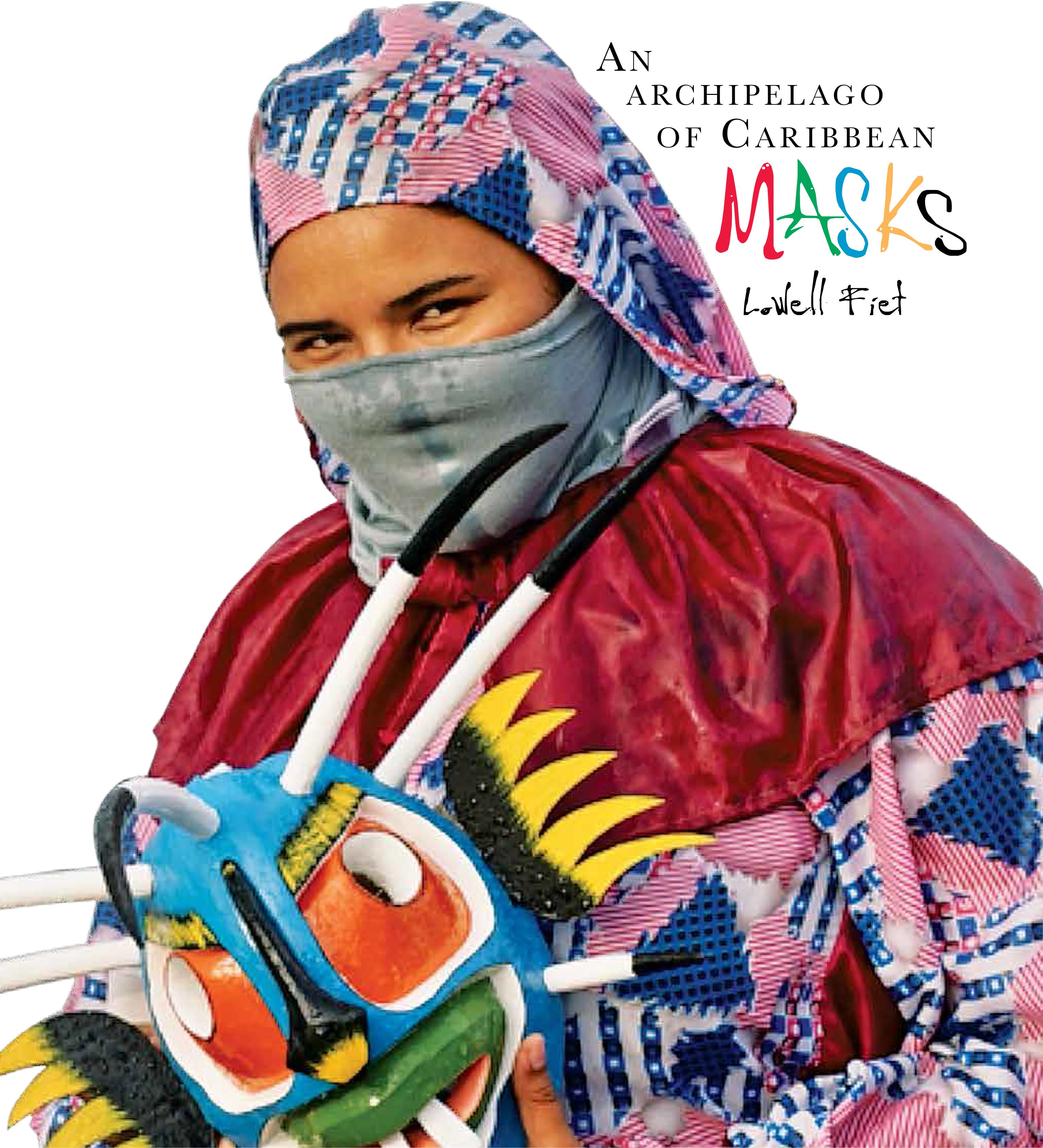 An Archipielago of Caribbean Masks
An Archipielago of Caribbean Masks
An Archipelago of Caribbean Masks
Este hermoso texto, un provocador híbrido entre el libro de arte (por su gran tamaño y generosas e impactantes imágenes) y el ensayo cultural (por los variados filtros disciplinarios con que se estudia la realidad); es un paradigmático estudio sobre la fiesta (celebración de los pueblos) y el ritual (recuerdo de los orígenes) del Carnaval en el Caribe (en el gran archipiélago caribeño) tomando como objeto y sujeto su símbolo material más contundente: la máscara. Historia, arte, música, literatura (oral y escrita) geografía, economía, poscolonialidad , posmodernidad y más, son algunos de los materiales que, con maestría, el autor usa para construir sus máscaras, a través de las cuales mira, describe y narra nuestra gesta de vida: nuestro carvanal.
The intermingling of sacred and profane African, Native American, European, East Indian, and/or Asian traditions in Caribbean festivals reaffirms itself, grows, diminishes, or changes in every new performance. The process remains unequal and follows no set program of development. The US-European-dominated commercial cultures of tourism and cyber-media intervene as forceful agents of change in Caribbean societies and their festivals. Island economic policies dictated by local offices of tourism and international corporations feed on the hedonistic aspects of visitors and locals “jumping up” in Carnival. At the same time, contemporary citizenship seems unthinkable for most young Caribbeans without satellite television, mobile phones, and Internet access. The typical counter-argument indicates that what touches global interests and cyberspace, including the plastic and latex masks available via Amazon and other websites, attracts them, while traditional culture and festival arts –perhaps especially the creation and use of unique handmade artistic masks– lose their appeal. If, in fact, that were the case, the sense of global as opposed to local culture would seem to occasion an erosion of traditions. Yet carnival and carnival-like celebrations multiply in the Caribbean and globally.
“I explore what the masks signify, what wearing them represents, their relation to character costumes and movement, on the one hand, and the celebratory traditions from which they emerge, on the other hand, their presumed metaphorical and discursive characteristics, and most importantly, who makes masks and how –their materials and form. As a critic-historian of theater and performance, as well as a mask maker and performer, the Puerto Rican Vejigante (trickster-diablo) mask assumed a principal role in my visual imaginary over forty years ago. In the years since, fieldwork in festival arts and cultural performance has increasingly appeared alongside my work in drama and performance art. Masking-making has also played a role in my personal life. From my childhood delight in Halloween, to building a papier-mâché Greek tragic mask as an undergraduate theater history student, to creating masks with an experimental theater group I directed for nearly a decade, to directing mask-making workshops throughout Puerto Rico and the rest of the Caribbean in the past decade: masks have always been with me.”
–Lowell Fiet
Contents
Foreword
I: Introduction: An Archipelago of Masks
Approaching a Theory of Masks
II: Coconut-Husk Vejigantes and Other Natural Materials Masks
III: Papier-Mâché Masks in Haiti, the Dominican Republic, and Panama
Papier-Mâché – Creativity in Jacmel, Haiti
The Diablos en San Juan de la Maguana (and elsewhere), Dominican Republic
The Diablos Sucios of La Villa de Los Santos, Panamá
IV: Papier-Mâché Masks in Puerto Rico, Trinidad, and Dominica
The Vejigantes of Ponce, Puerto Rico
Papier-Mâché Masks in Trinidad's Carnival
Carnival in Dominica
V: Wire Screen, Cardboard, "Paint", and Synthetic Masks
Wire Screen
Cardboard
Paint
Global Masks
VI: Mask-Making in Transcultural Education
Mask-Making Workshops
Results
Afterword
Works Cited or Referenced
Lowell Fiet was educated at the University of Wisconsin (PhD 1973) and has taught at the University of Puerto Rico-Río Piedras since 1978. His dozens of reviews, articles, and books focus on Caribbean and Puerto Rican theater, drama, and performance. He is the founding editor of Sargasso, launched the Rockefeller Foundation-supported “Caribbean 2000” project, organized three National. Endowment for the Humanities summer projects, and designed and for several years coordinated the UPR-Río Piedras PhD Program in Caribbean literature and linguistics. He was Eugenio María de Hostos Honorary Professor at UPR in 2001-2003, and has also served as the director of the Interdisciplinary Studies program in Humanitiesand the Institute of Caribbean Studies in Social Sciences. His books include El teatro puertorriqueño reimaginado (2004) and Caballeros, vejigantes, locas y viejos: Santiago Apóstol y los performeros afro-puertorriqueños (2007). His current work focuses on festival masks in Portugal and Spain and masks in contemporary Puerto Rican theater.

